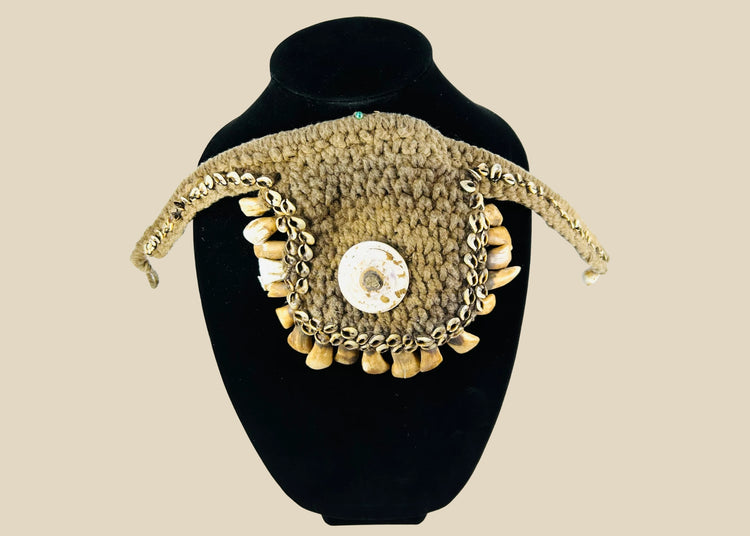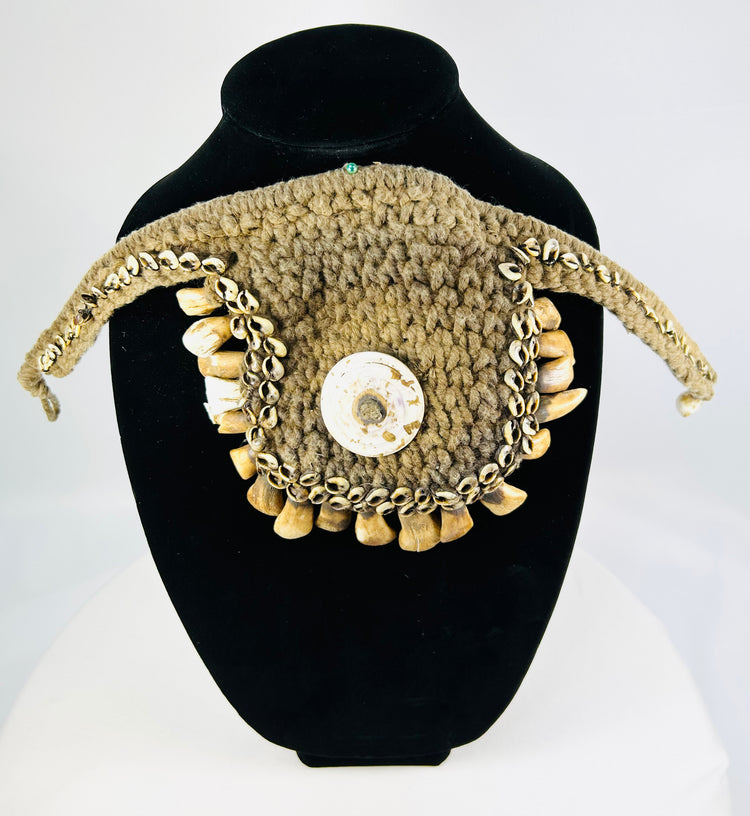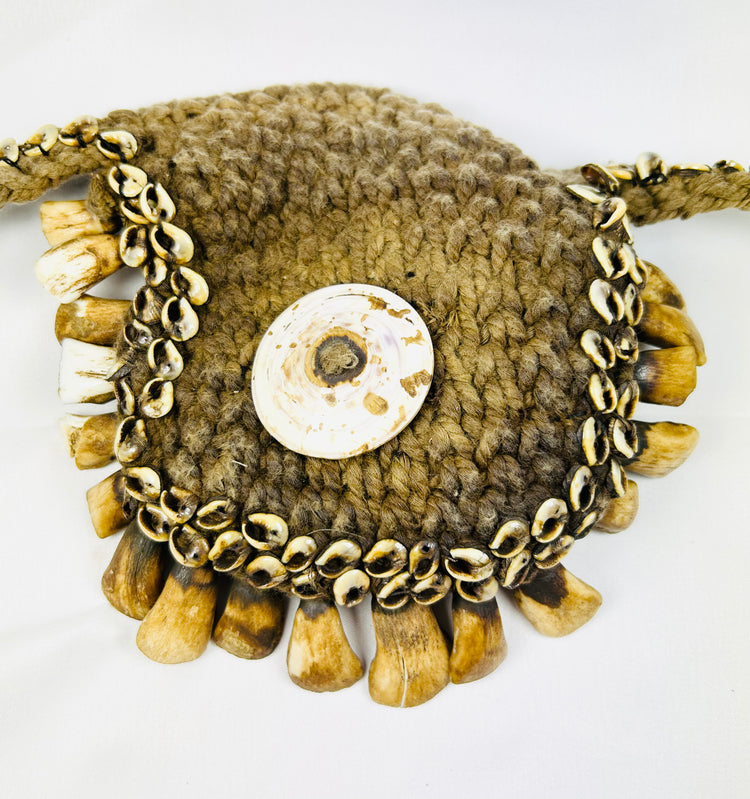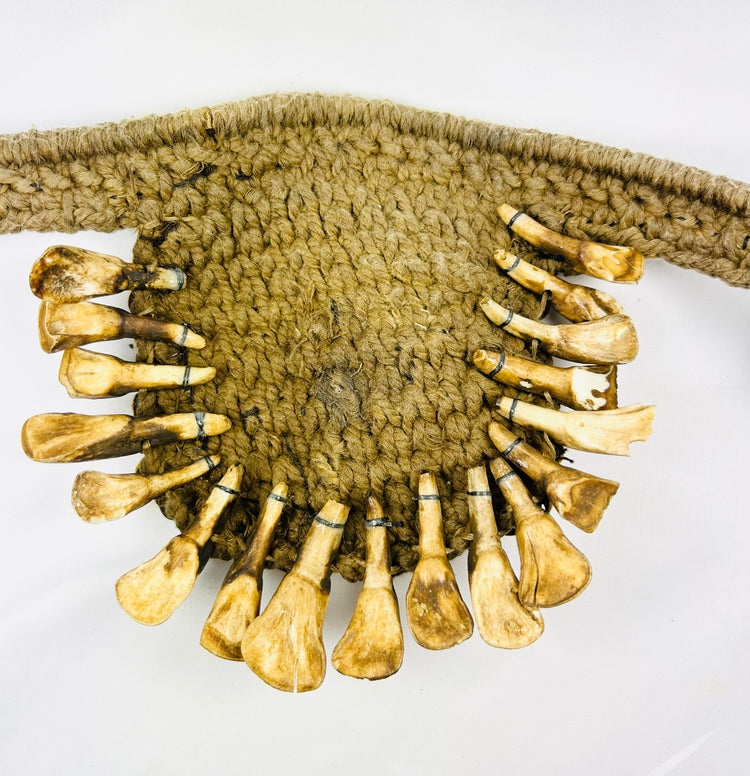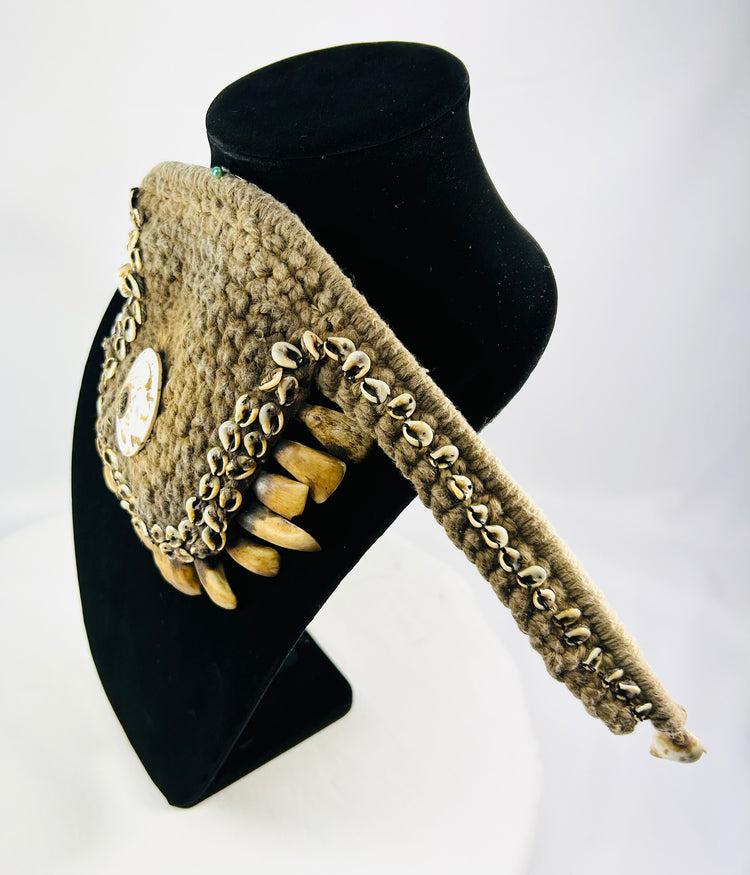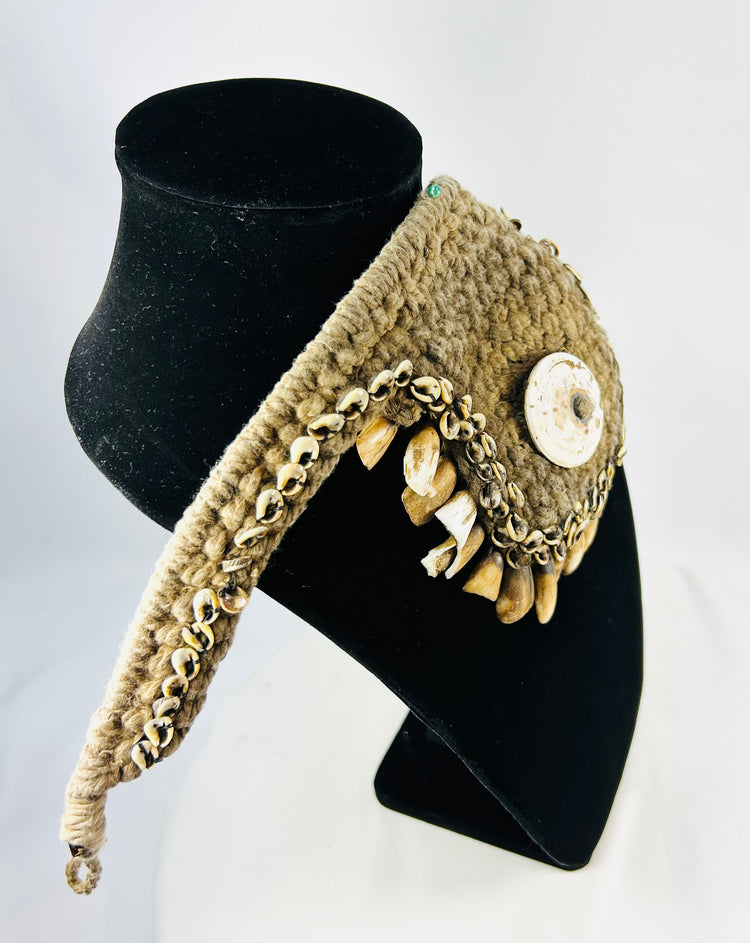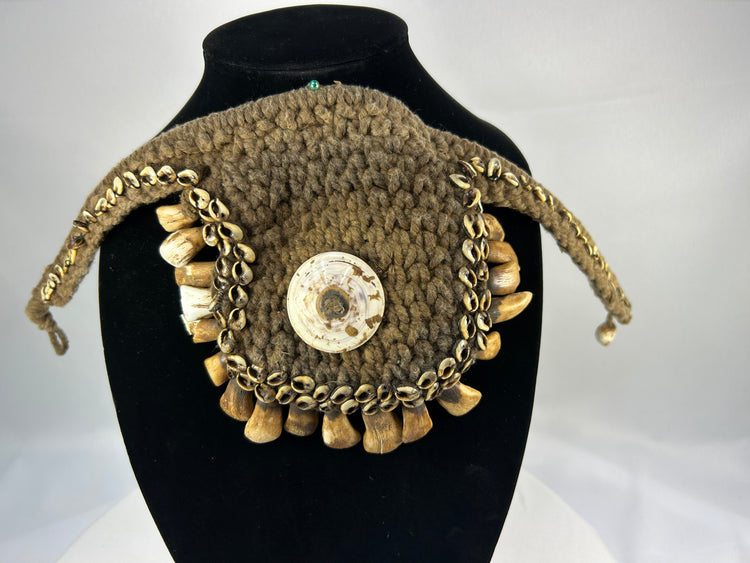Ritual Tribal Ornament with Cowrie Shell Center and Tooth Fringe | Circa 19th– Early 20th Century
Description
More
Less
Historical Context & Origin
Region: Papua New Guinea, Melanesia
Material: Woven plant fiber, cowrie shell, animal teeth (likely pig or canine), natural cordage
Period: Late 19th – Early 20th Century
Description
This striking ceremonial adornment from Papua New Guinea combines woven plant fibers, natural cordage, and organic prestige materials to powerful effect. A central cowrie shell anchors the design, set against tightly woven fiber backing, while radiating rows of pierced animal teeth create a dramatic fringe. Designed to be worn as either a headdress or chest ornament, the piece emphasizes sound, movement, and visual presence during ritual performance. The integration of shells and teeth reflects both wealth and spiritual symbolism, underscoring its role in initiation, dance, or warrior display.
Features
- Traditional ceremonial adornment from Papua New Guinea
- Woven plant-fiber base with central cowrie shell
- Suspended fringe of pierced animal teeth, likely pig or dog
- Constructed with natural cordage for durability and wear
- Strong sculptural and ethnographic presence when mounted for display
Cultural Significance
Adornment in Papua New Guinea held deep symbolic and social meaning, with shells, tusks, and teeth serving as indicators of prestige, power, and ancestral connection. The cowrie shell, valued as both currency and ornament across Oceania, functioned as a potent center of wealth and spirituality, while the teeth signified vitality, protection, and hunting skill. Such regalia was typically reserved for ceremonies, affirming identity, status, and continuity within the community.
Condition
Good ethnographic condition. Fiber weaving intact with minor wear; cordage and teeth show expected patina and handling marks consistent with age and ritual use.
Dimensions (approximate)
Length: 20 in
Age
Late 19th – Early 20th Century
Learn More
Learn more about the history of religions and cultures and the symbolic role of ritual objects: Ceremonial object
Browse additional Shamanic & Tribal ritual artifacts at Relic and Rarity
Description
Historical Context & Origin
Region: Papua New Guinea, Melanesia
Material: Woven plant fiber, cowrie shell, animal teeth (likely pig or canine), natural cordage
Period: Late 19th – Early 20th Century
Description
This striking ceremonial adornment from Papua New Guinea combines woven plant fibers, natural cordage, and organic prestige materials to powerful effect. A central cowrie shell anchors the design, set against tightly woven fiber backing, while radiating rows of pierced animal teeth create a dramatic fringe. Designed to be worn as either a headdress or chest ornament, the piece emphasizes sound, movement, and visual presence during ritual performance. The integration of shells and teeth reflects both wealth and spiritual symbolism, underscoring its role in initiation, dance, or warrior display.
Features
- Traditional ceremonial adornment from Papua New Guinea
- Woven plant-fiber base with central cowrie shell
- Suspended fringe of pierced animal teeth, likely pig or dog
- Constructed with natural cordage for durability and wear
- Strong sculptural and ethnographic presence when mounted for display
Cultural Significance
Adornment in Papua New Guinea held deep symbolic and social meaning, with shells, tusks, and teeth serving as indicators of prestige, power, and ancestral connection. The cowrie shell, valued as both currency and ornament across Oceania, functioned as a potent center of wealth and spirituality, while the teeth signified vitality, protection, and hunting skill. Such regalia was typically reserved for ceremonies, affirming identity, status, and continuity within the community.
Condition
Good ethnographic condition. Fiber weaving intact with minor wear; cordage and teeth show expected patina and handling marks consistent with age and ritual use.
Dimensions (approximate)
Length: 20 in
Age
Late 19th – Early 20th Century
Learn More
Learn more about the history of religions and cultures and the symbolic role of ritual objects: Ceremonial object
Browse additional Shamanic & Tribal ritual artifacts at Relic and Rarity
You May Also Like






























